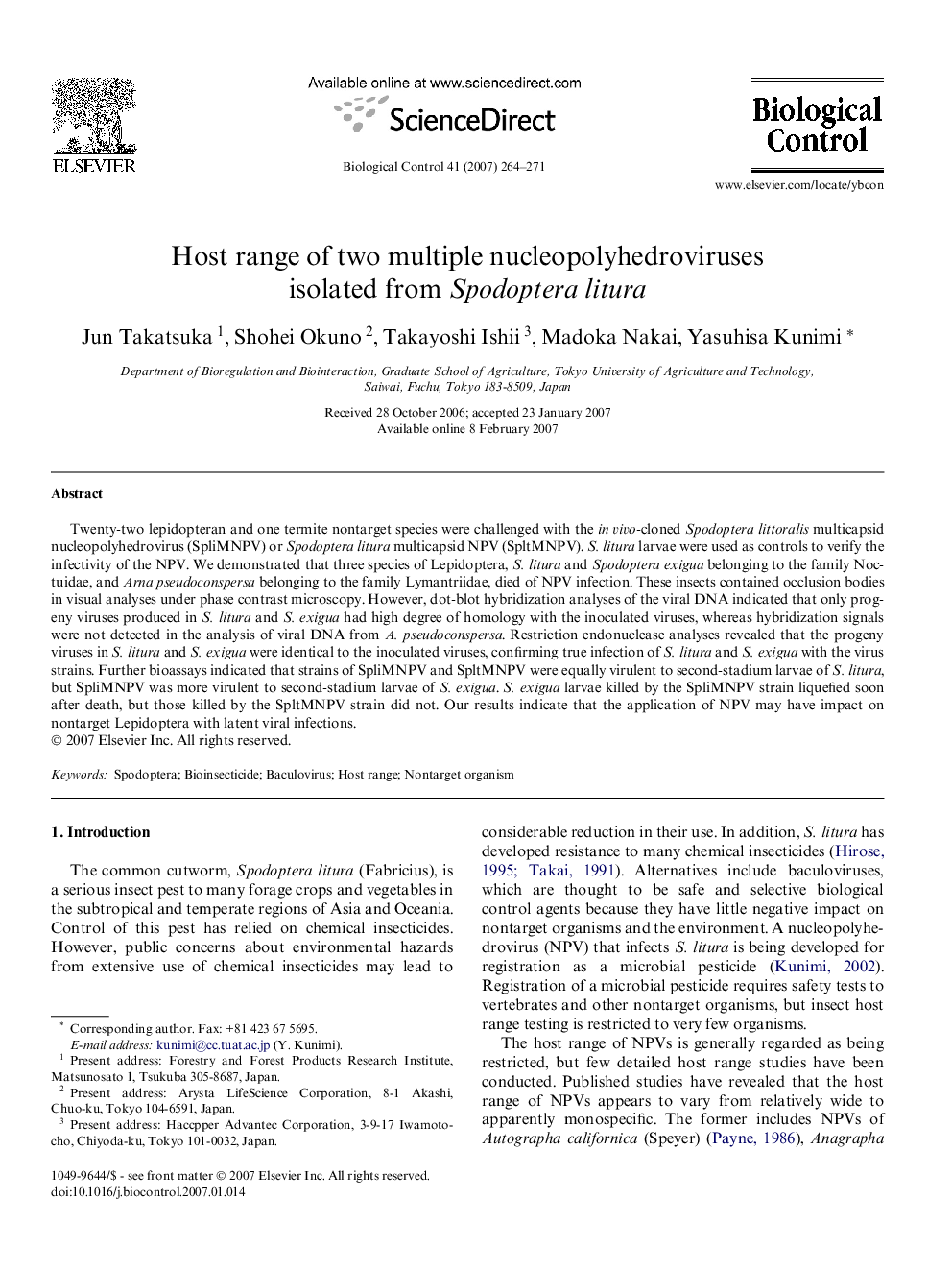| Article ID | Journal | Published Year | Pages | File Type |
|---|---|---|---|---|
| 4505091 | Biological Control | 2007 | 8 Pages |
Twenty-two lepidopteran and one termite nontarget species were challenged with the in vivo-cloned Spodoptera littoralis multicapsid nucleopolyhedrovirus (SpliMNPV) or Spodoptera litura multicapsid NPV (SpltMNPV). S. litura larvae were used as controls to verify the infectivity of the NPV. We demonstrated that three species of Lepidoptera, S. litura and Spodoptera exigua belonging to the family Noctuidae, and Arna pseudoconspersa belonging to the family Lymantriidae, died of NPV infection. These insects contained occlusion bodies in visual analyses under phase contrast microscopy. However, dot-blot hybridization analyses of the viral DNA indicated that only progeny viruses produced in S. litura and S. exigua had high degree of homology with the inoculated viruses, whereas hybridization signals were not detected in the analysis of viral DNA from A. pseudoconspersa. Restriction endonuclease analyses revealed that the progeny viruses in S. litura and S. exigua were identical to the inoculated viruses, confirming true infection of S. litura and S. exigua with the virus strains. Further bioassays indicated that strains of SpliMNPV and SpltMNPV were equally virulent to second-stadium larvae of S. litura, but SpliMNPV was more virulent to second-stadium larvae of S. exigua. S. exigua larvae killed by the SpliMNPV strain liquefied soon after death, but those killed by the SpltMNPV strain did not. Our results indicate that the application of NPV may have impact on nontarget Lepidoptera with latent viral infections.
